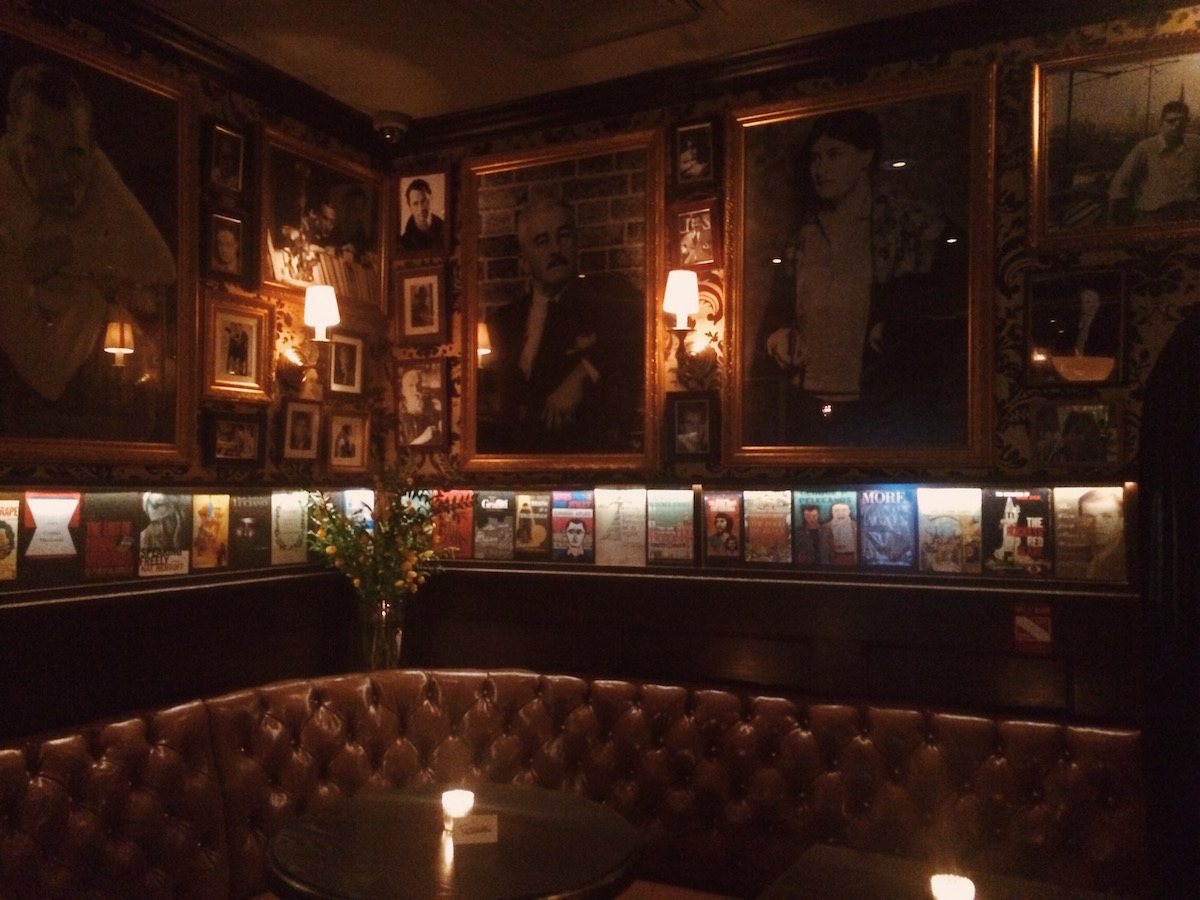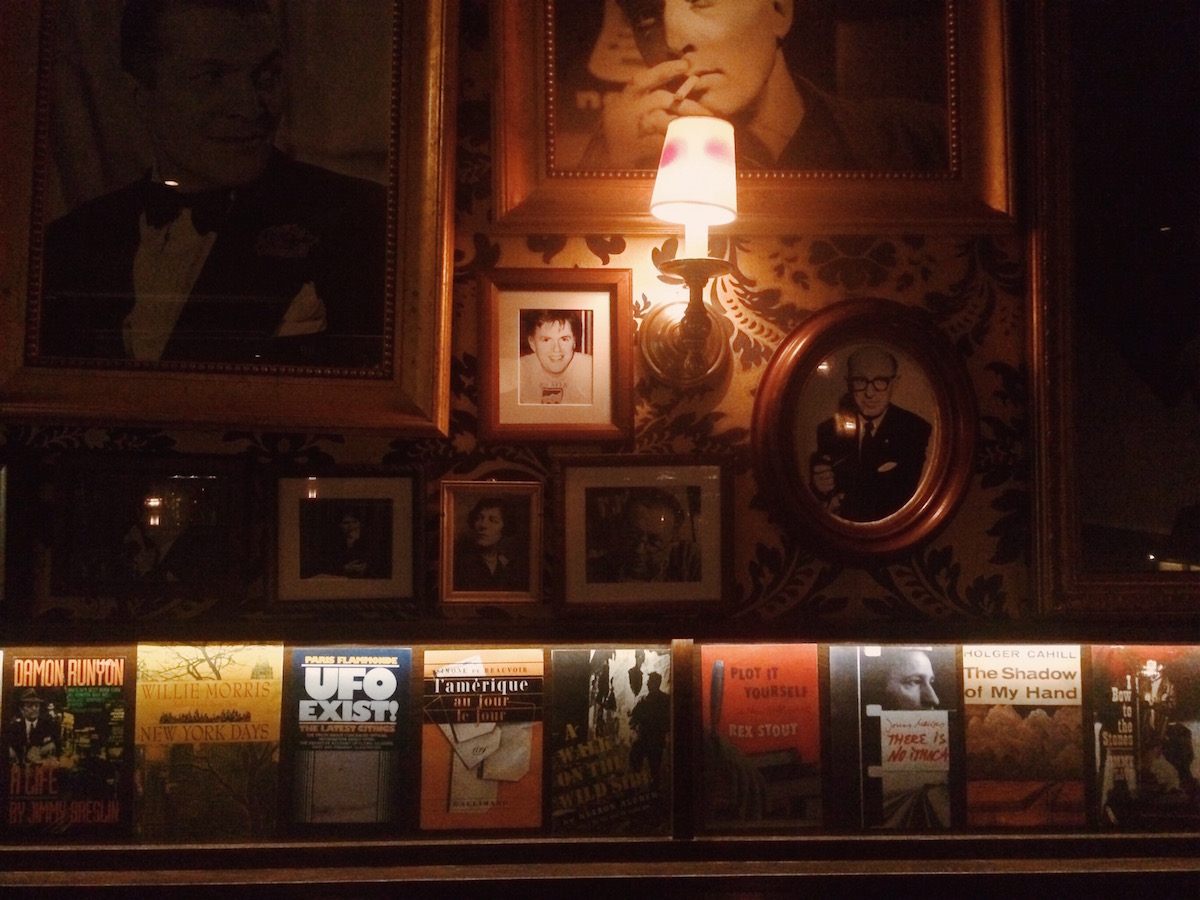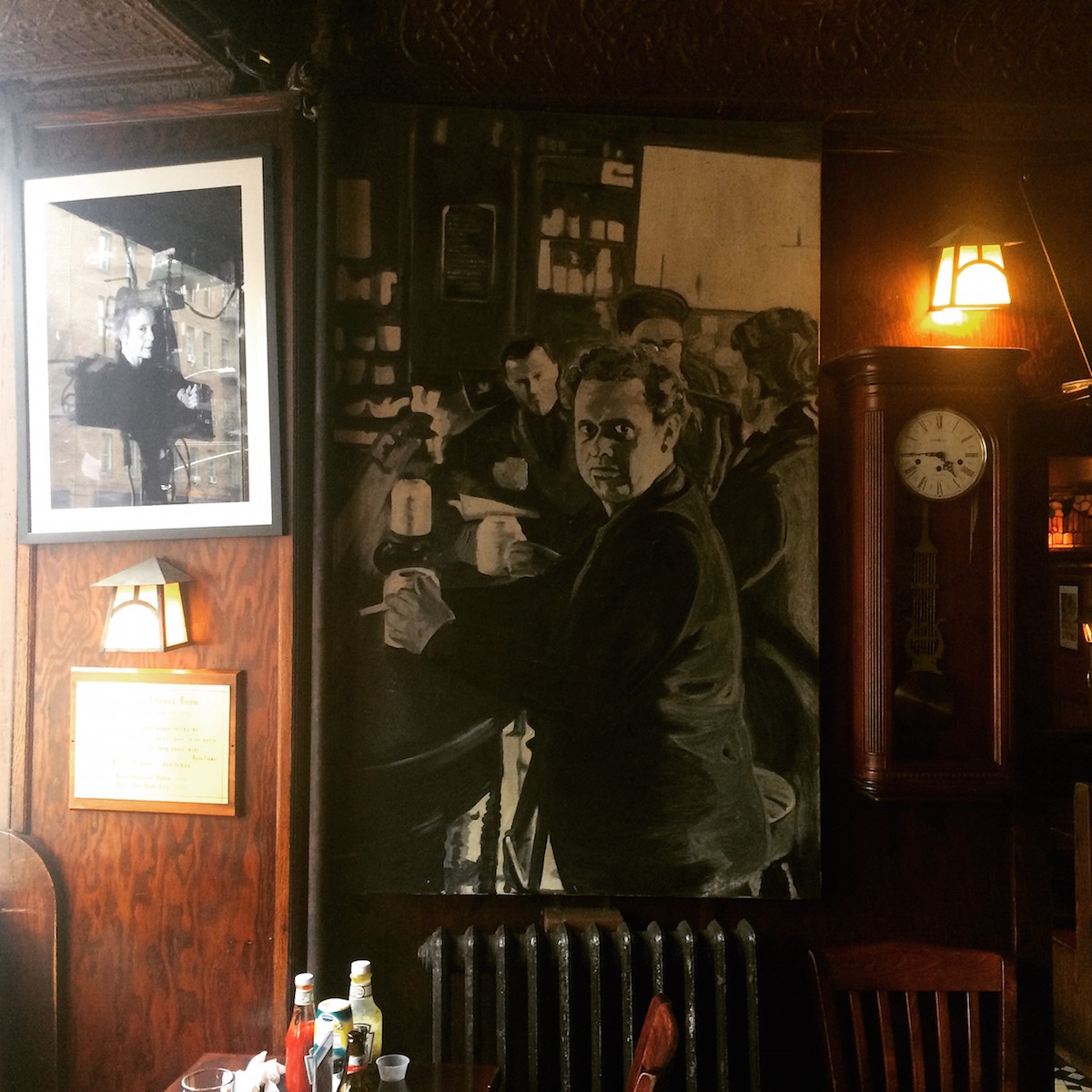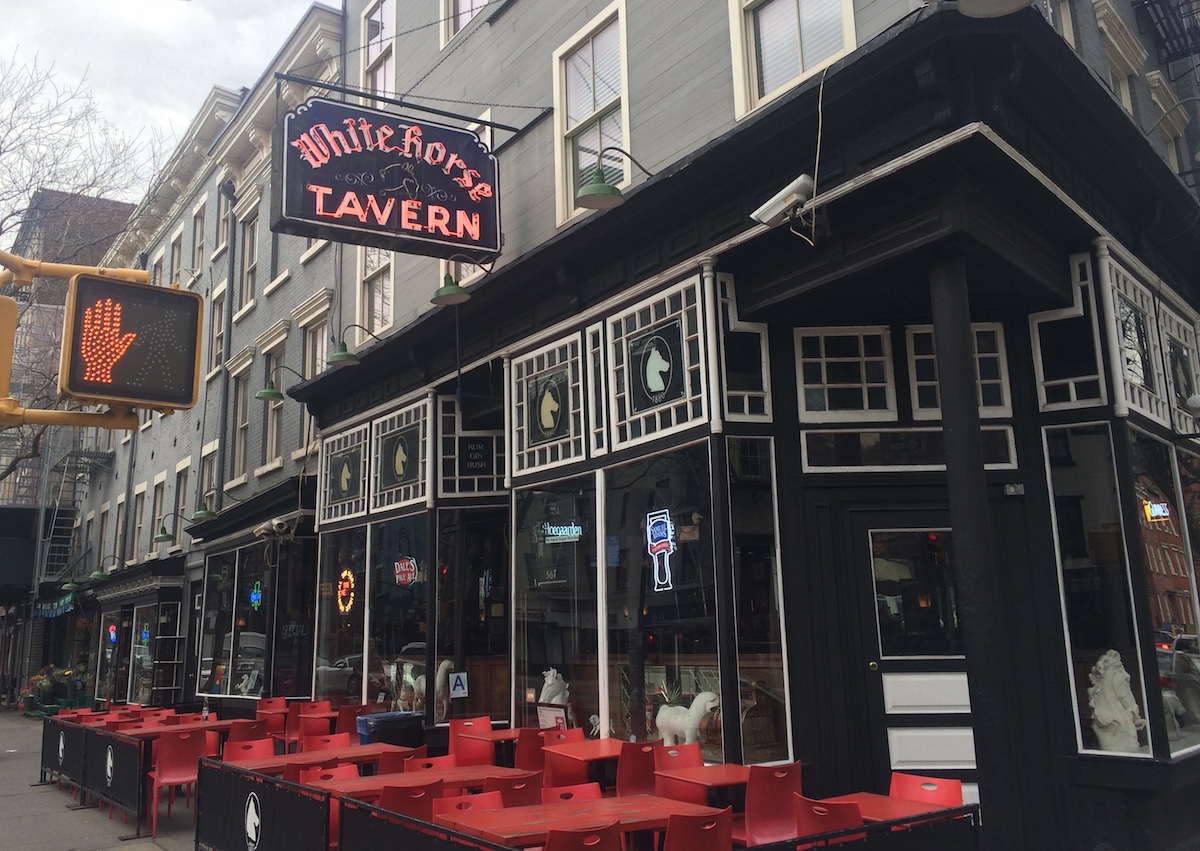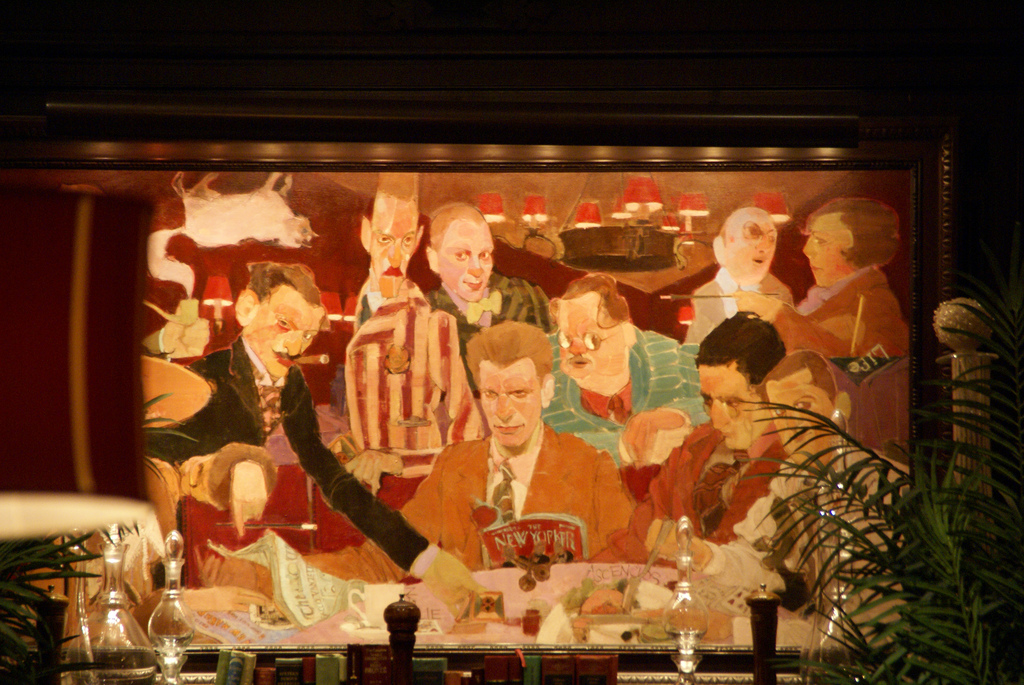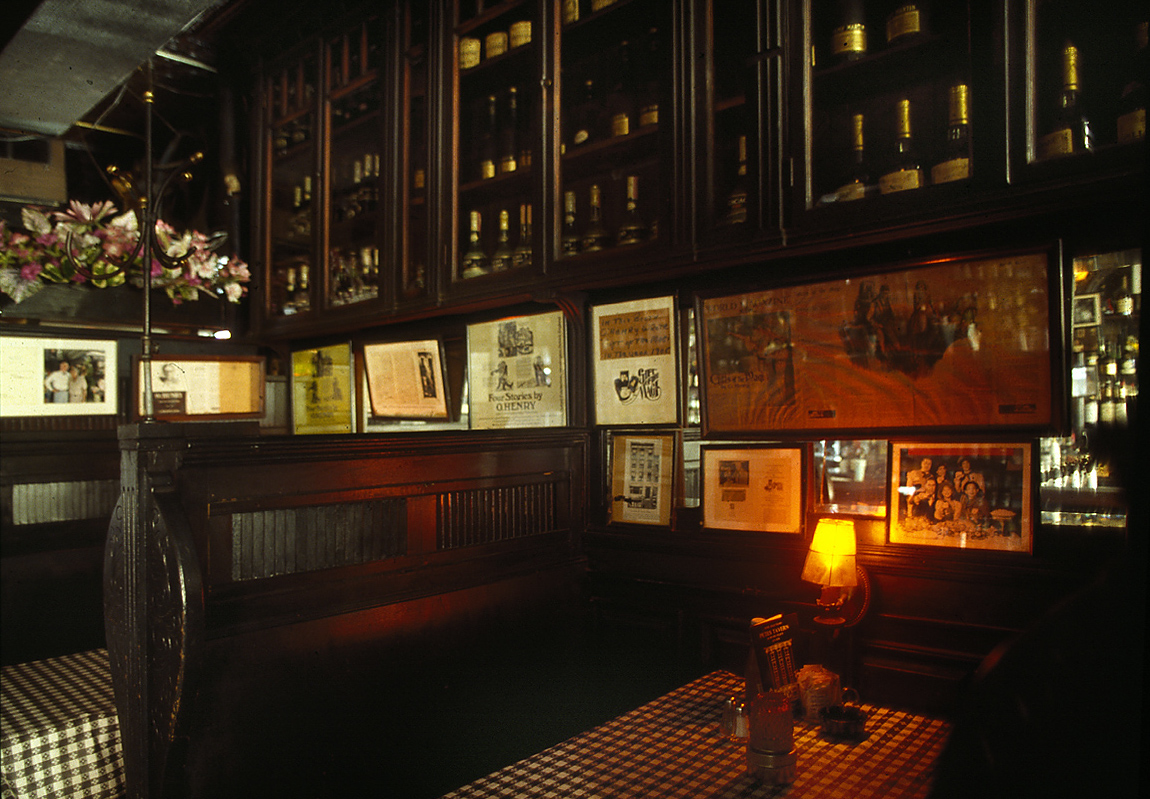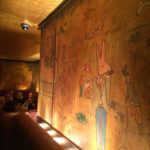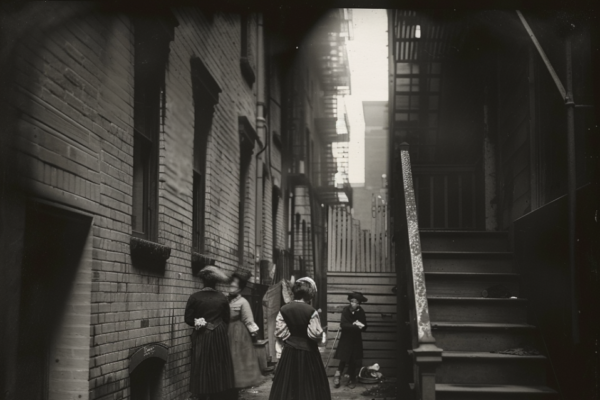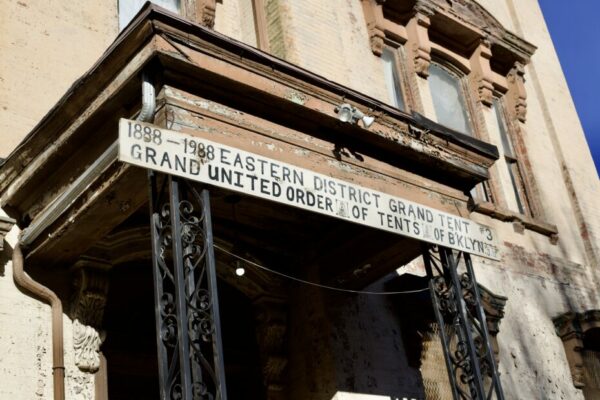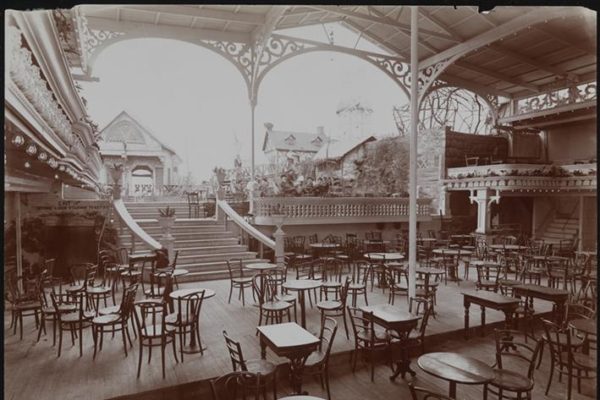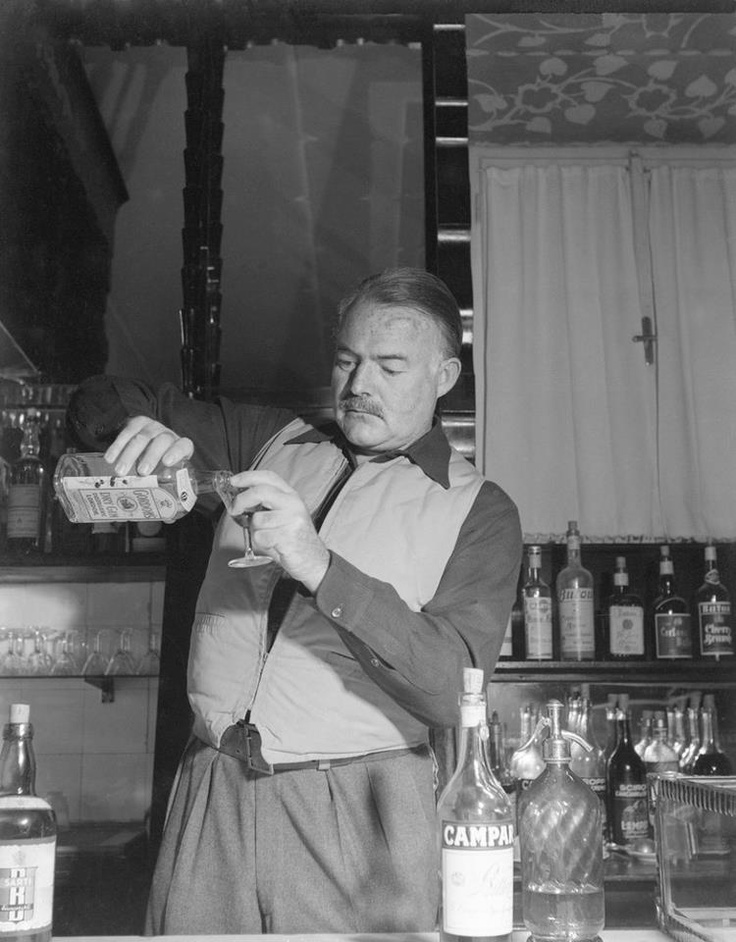
For those who like their evening tipple with a literary twist, Manhattan is resplendent with bars where famous writers once visited. Whether to seek inspiration over a Sazerac, or escape over a Gin Fizz, some of these bars have become synonymous with some of the great writers of the 20th century, whilst others remain unnoticed. From dark, dive bars to glitzy, hotel lounges, today it is still possible to sit on the same bar stool where your favourite author once passed a little time over a friendly drink.
Chumley’s
There is a bar in Greenwich Village that is quite hard to find, mostly because it was designed to be that way. A small, former blacksmith’s shop on 86, Bedford Street was turned into a speakeasy during Prohibition by owner Leland Chumley. With sawdust covering a floor which included a trapdoor, the bar was peculiar in that it had two unmarked entrances on separate streets, Bedford and Barrow.
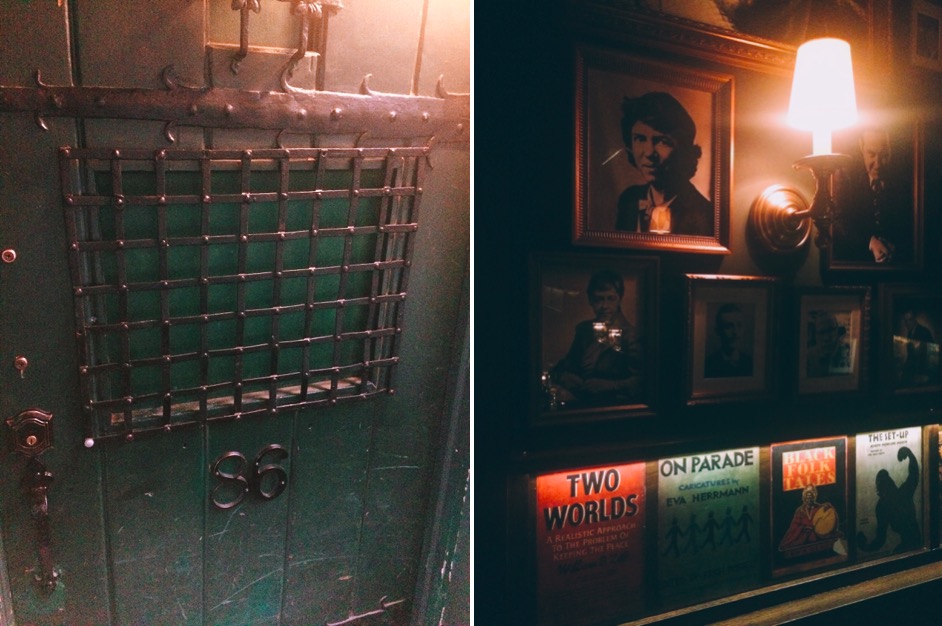
The expression to “86” someone or something comes from this back door of Chumley’s © Luke J Spencer
The main entrance on Barrow Street was gained by walking into an anonymous small courtyard, whilst the secret back door on Bedford could provide a speedy and convenient escape route if the bar was raided by the police. Manhattan folk lore has it that the term to “86” someone (to throw someone out), is derived from the bar’s secret door at 86, Bedford Street.
All of which subterfuge and shenanigans made Chumley’s the perfect secret swigging spot for many a famous writer, many of whose dust jackets lined the glass cases which decorated the bar. A plaque in the bar recalls, “a celebrated haven frequented by poets, novelists and playwrights who define twentieth century literature.” Those who would sneak in and out of the snug speakeasy included Willa Cather, William Faulkner and Eugene O’Neill.
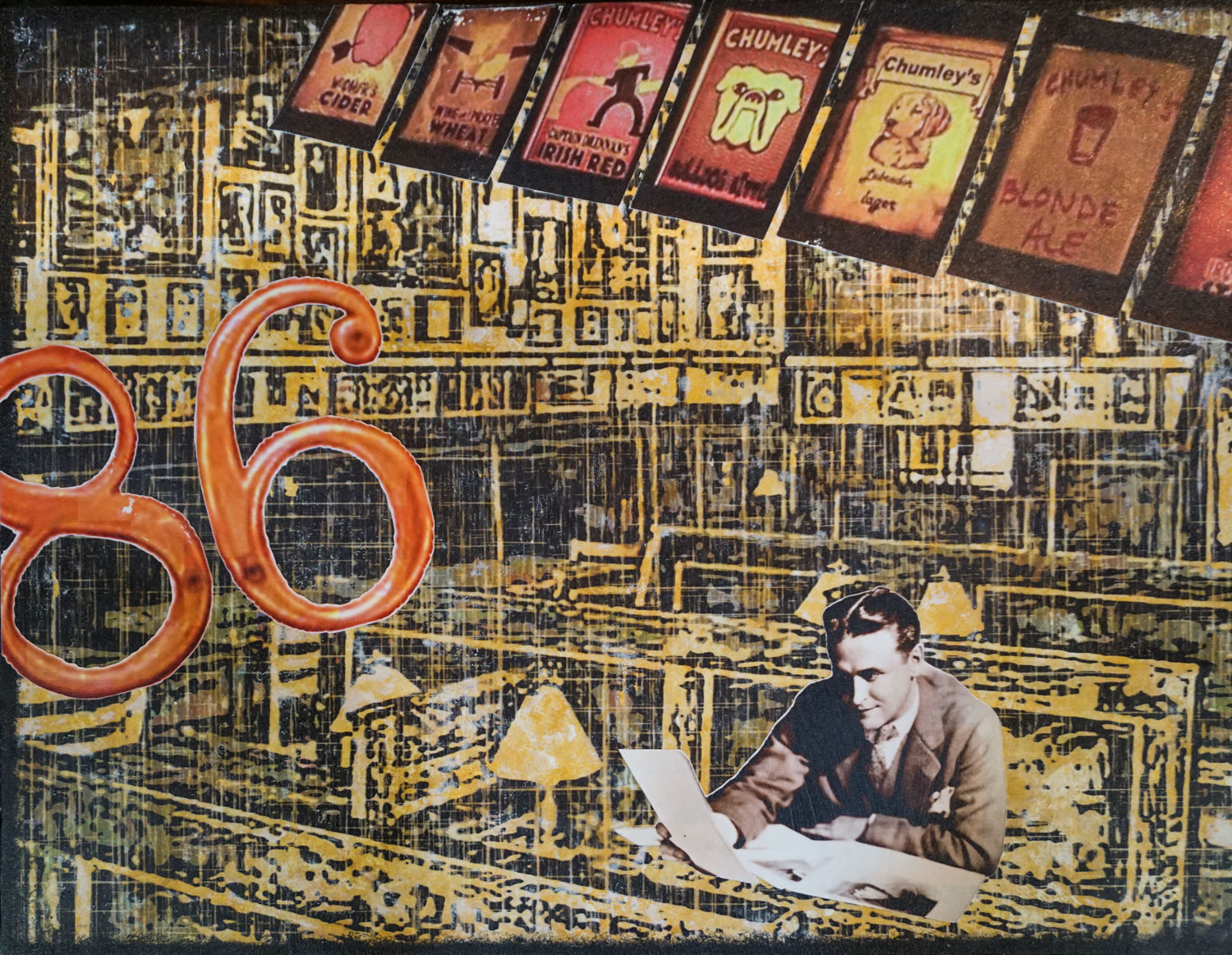
Chumley’s Mixed Media print by Christi Scofield.
One of New York’s most secretive but charming hideaways, Chumley’s suffered a disastrous collapse in 2007, which saw it close for a decade. But just recently, the venerable drinking den of many a hard boiled writer reopened. The sawdust has gone, but the literary charm remains. Not least in one quiet secluded table, underneath twin portraits of F.Scott & Zelda Fitzgerald, who once sat there side by side.
What To Say :
“Too much of anything is bad, but too much Champagne is just right” – F. Scott Fitzgerald
The White Horse Tavern
One of Manhattan’s most well known literary bars, the White Horse Tavern had been serving locals and longshore men from the nearby Hudson River for over 70 years, before it became famous as Dylan Thomas’ last port of call before he died in 1953.
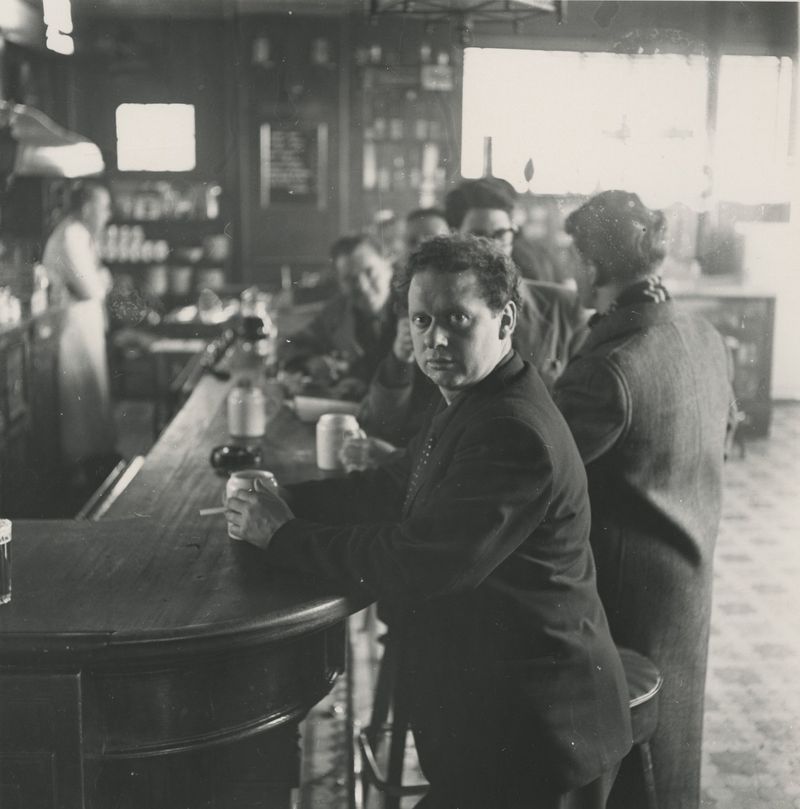
Dylan Thomas at White Horse
Located on Hudson Street in the West Village, the White Horse was a popular destination for Dylan Thomas, reminding him of his favourite taverns in Wales. Other poets and beat writers thronged to the cozy, neighbourhood bar, including Allen Ginsberg and Jack Kerouac, who it is said was thrown out of the bar, leading, legend has it, to the ‘Go home Jack!’ graffiti in the men’s room.
But it is Dylan Thomas, with whom the White Horse is most synonymous, and whose portrait can be seen all over the old bar room. On November 3rd, he is reputed to have downed 18 shots of whiskey (although some accounts have it as half that many), collapsed on the pavement outside, before being taken to his room at the Chelsea Hotel. Thomas had been suffering from a severe chest illness when he left England for New York, to rehearse Under Milk Wood. He was taken to St. Vincent’s Hospital, where he died of complications from pneumonia a few days later.
Today, the White Horse remains a friendly, local pub, with dark wooden interiors, snug rooms and pressed tin ceilings, looking much as it did when Dylan Thomas would often drop in to sit by the window. A plaque honouring the poet can be found on the wall of what is now known as the Dylan Thomas room, dedicated to a ‘Poet – Scholar – Gentleman’.
What To Say :
“Do not go gentle into that good night,
Old age should burn and rave at close of day;
Rage, rage against the dying of the light.” – Dylan Thomas
The Algonquin Hotel
One of midtown-Manhattan’s grand old hotels, the Algonquin has welcomed the well-heeled through its ornately engraved glass revolving doors since 1902. The plush lobby is so sophisticated it comes with its own cat that lounges on a personal velvet chaise longue.
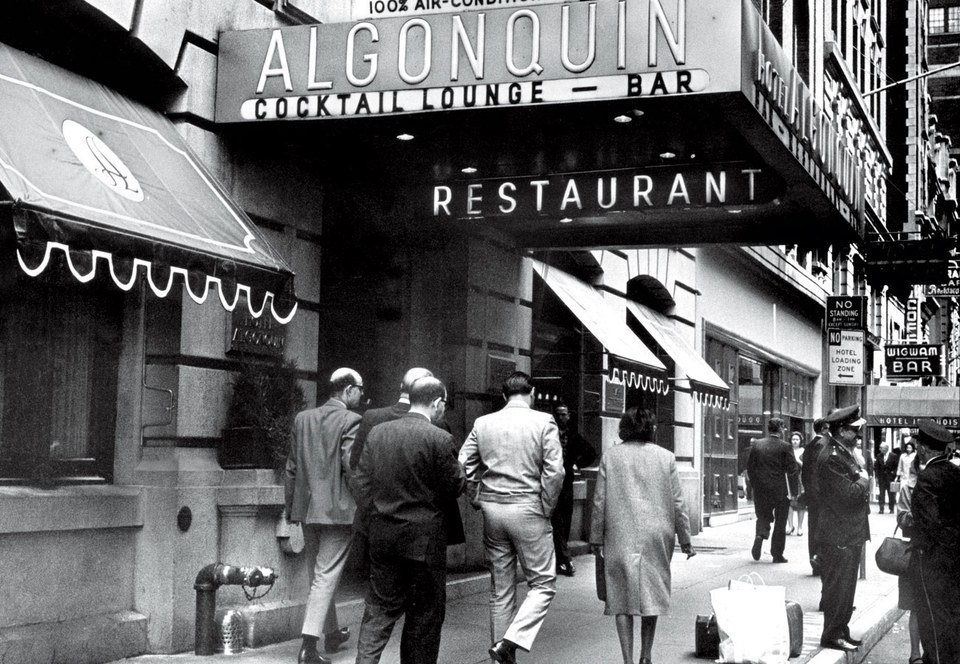
The Algonquin Hotel, 1965 by Meyer Liebowitz/The NY Times
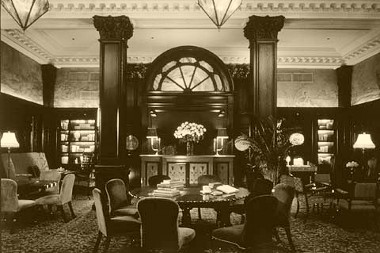 The dark oak lined walls of the luxurious hotel became a haven for writers in the 1920s, who met here for lunch everyday from 1919 to 1929. Originally meeting at a long table in the Oak Room supper club, the Algonquin’s hotelier Frank Case installed them at a large round table in the Rose Room, giving birth to the infamous Algonquin Round Table and the Vicious Circle.
The dark oak lined walls of the luxurious hotel became a haven for writers in the 1920s, who met here for lunch everyday from 1919 to 1929. Originally meeting at a long table in the Oak Room supper club, the Algonquin’s hotelier Frank Case installed them at a large round table in the Rose Room, giving birth to the infamous Algonquin Round Table and the Vicious Circle.
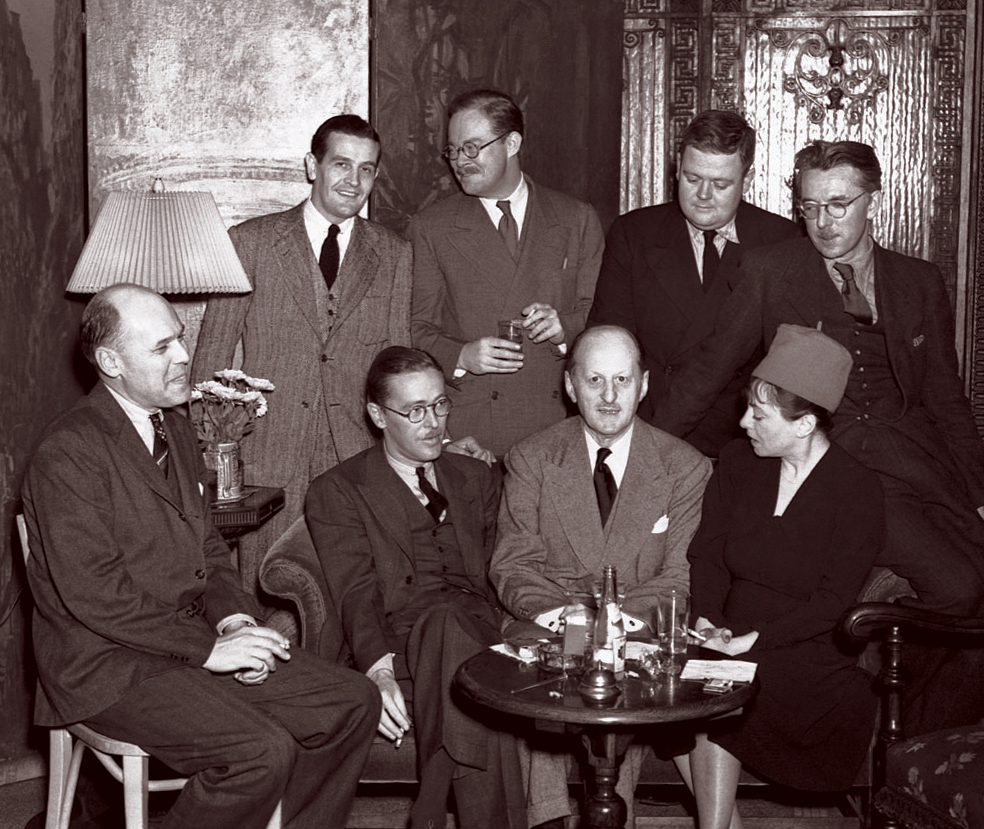
The Algonquin Round Table was a group of young literati, including Dorothy Parker (right) who favored the Algonquin Hotel as a daily meeting spot
A plaque in the hotel recounts where, “such acid tongue wits as Dorothy Parker, Robert Benchley and Alexander Woollcott traded barbs and bon mots daily over lunch.” The Round Table attracted playwrights, critics, columnists and authors to its celebrated, boozy lunches.
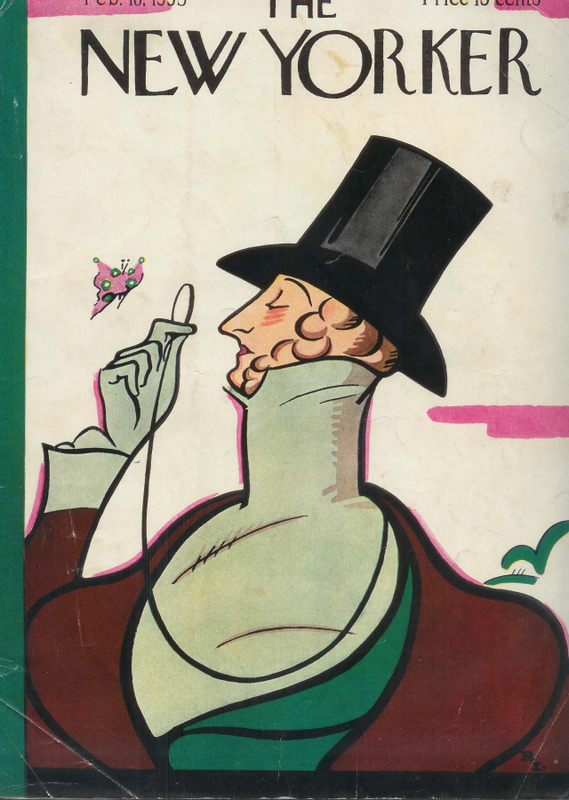
The First Issue
One Round Tabler, the journalist Harold Ross, won a substantial amount of money in a poker game from other members of the Vicious Circle; with the proceeds he financed the New Yorker magazine, hiring Dorothy Parker as a book reviewer, and Benchley as his drama critic.
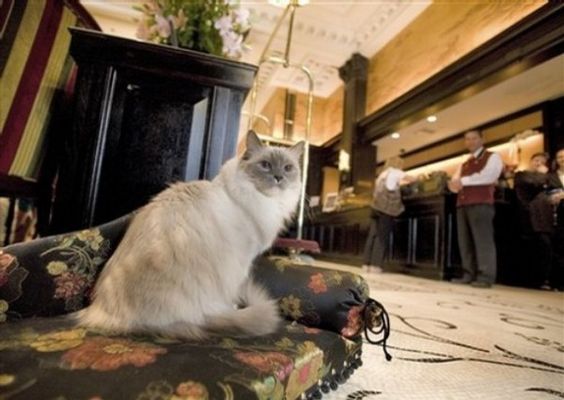
via the Algonquin FB page
Today the Algonquin remains one of the finest historic hotels in the Metropolis. The resident cat, Mathilda can be found more often than not on her chaise longue, and the storied Round Table, where once Dorothy Parker sipped martinis can still be reserved.
What To Say :
“I like to have a martini, Two at the very most. After three I’m under the table, after four I’m under my host.” – Dorothy Parker.
Pete’s Tavern
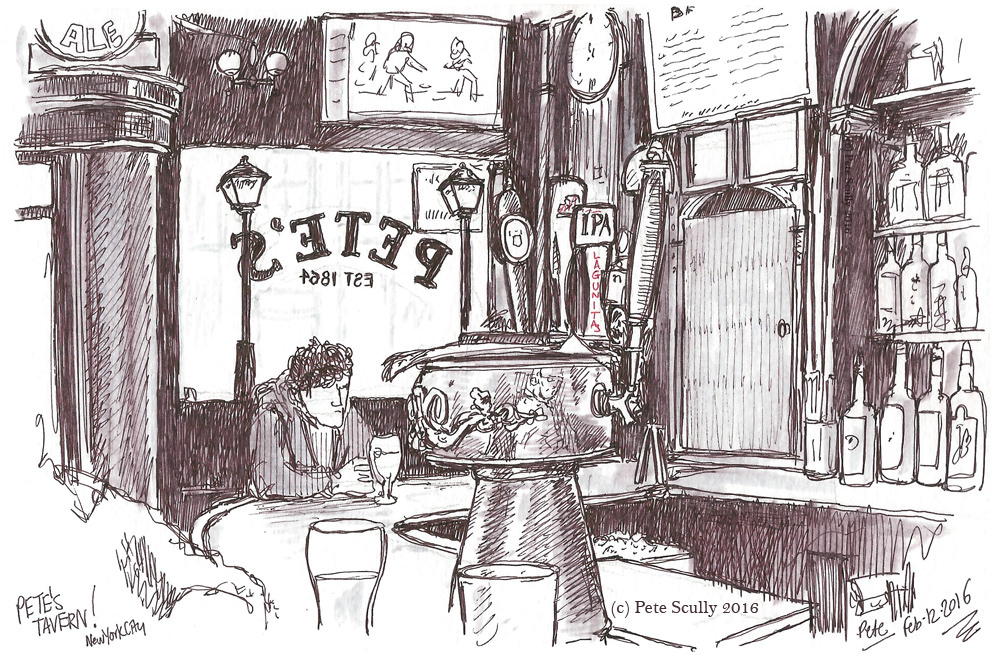
Art work by Pete Scully
Our next port of call is Pete’s Tavern. A small, neighbourhood bar near Gramercy Park, Pete’s Tavern has been catering to thirsty New Yorkers quite remarkably for every day since 1864. Whilst virtually every other bar in the City closed up shop during prohibition, Pete’s disguised itself as a flower shop.
But the dark, wooden paneled old bar is steeped in literary history; Ludwig Bemelman created his much loved character Madeline right here on the corner of East 18th Street and Irving Place. But it is the second, cosy booth from the venerable doorway that gathers the most attention. For here is a small, hand written sign, saying, “In this booth, O.Henry wrote Gift of the Magi in the year 1905.”
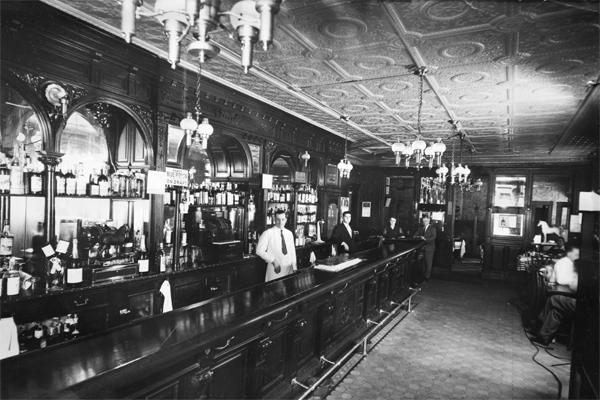
Pete’s Tavern is the oldest operating restaurant and bar in New York City
O. Henry, or William Sidney Porter as he was born, was a prolific short story writer, who lived nearby Pete’s Tavern, on Irving Place. Many of O.Henry’s stories, known for their surprise twist endings, featured common New Yorkers. The Gift of the Magi was written for the New York Sunday World as a Christmas story. It told of a poor, married couple wanting to give each other Christmas presents, but having no money to do so. Delia, the wife, sells her treasured possession, her long, beautiful hair to buy a watch chain for her husband. At the same time, Jim, the husband, sells his grandfather’s pocket watch to buy bejewelled combs for Delia’s hair.
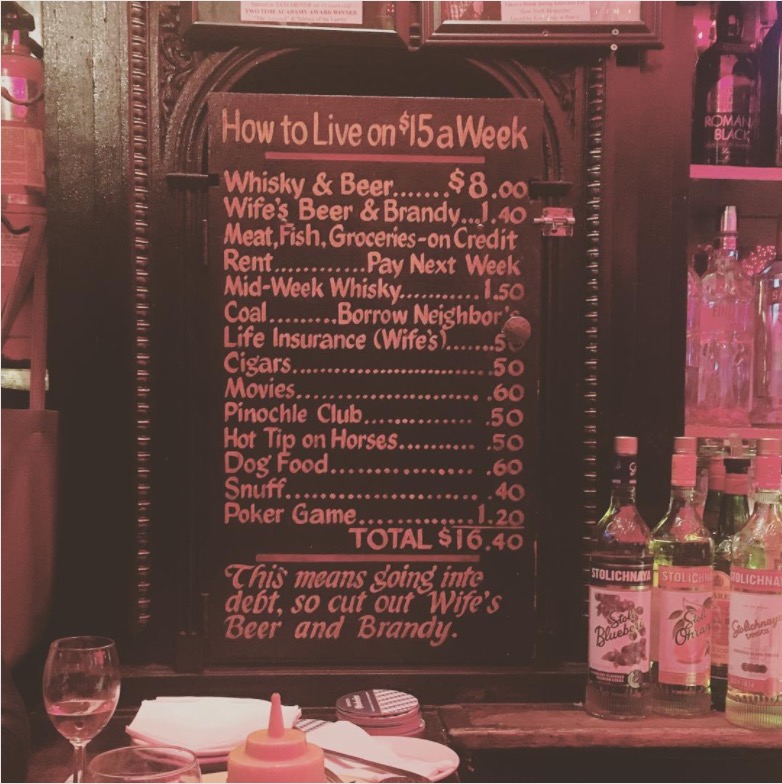
© Instagram / AmyAkaBlamey
Whether O. Henry actually wrote the story completely in his booth at Pete’s is unknown. Bar legend has it, he wrote on the back of a menu. A prolific drinker, O. Henry undoubtedly dropped in on every saloon in the neighbourhood, before succumbing to cirrhosis of the liver just five years after his heart warming tale, the Gift of the Magi was published.
What To Say :
“It couldn’t have happened anywhere, but in little old New York.”- O. Henry
McSorley’s Old Ale House
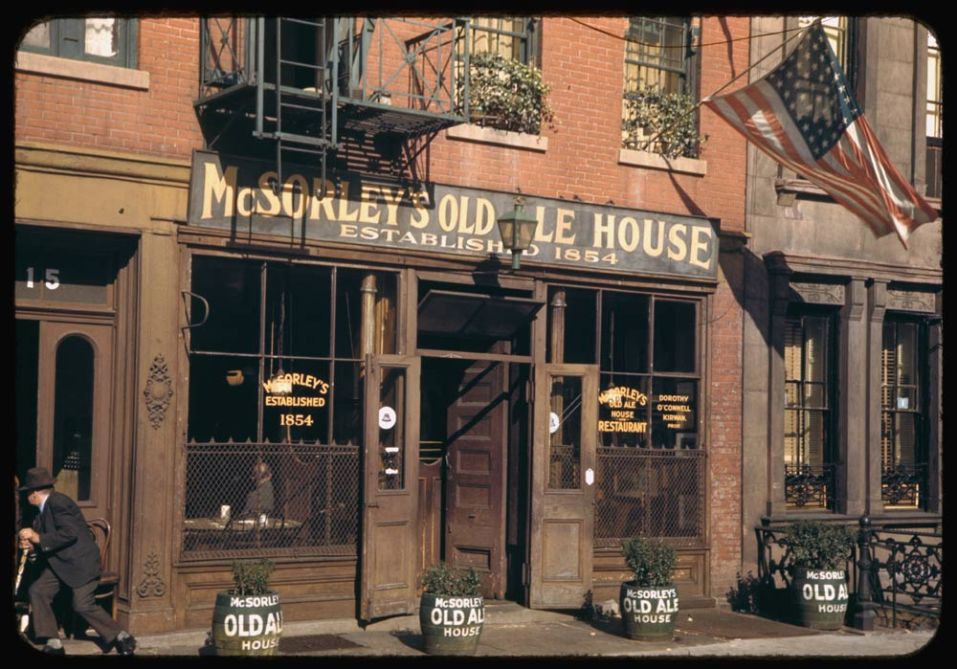
Rivaling Pete’s Tavern as one of the bars which claim to be New York’s oldest, is the venerable McSorley’s. Located on East 7th Street, and first opening it’s weathered doors in 1854, a decade earlier, McSorley’s would appear to take the honours, but some records show the old saloon closed for a spell in 1860. But what is indisputable is the sense of history and old time feel the moment you step inside.
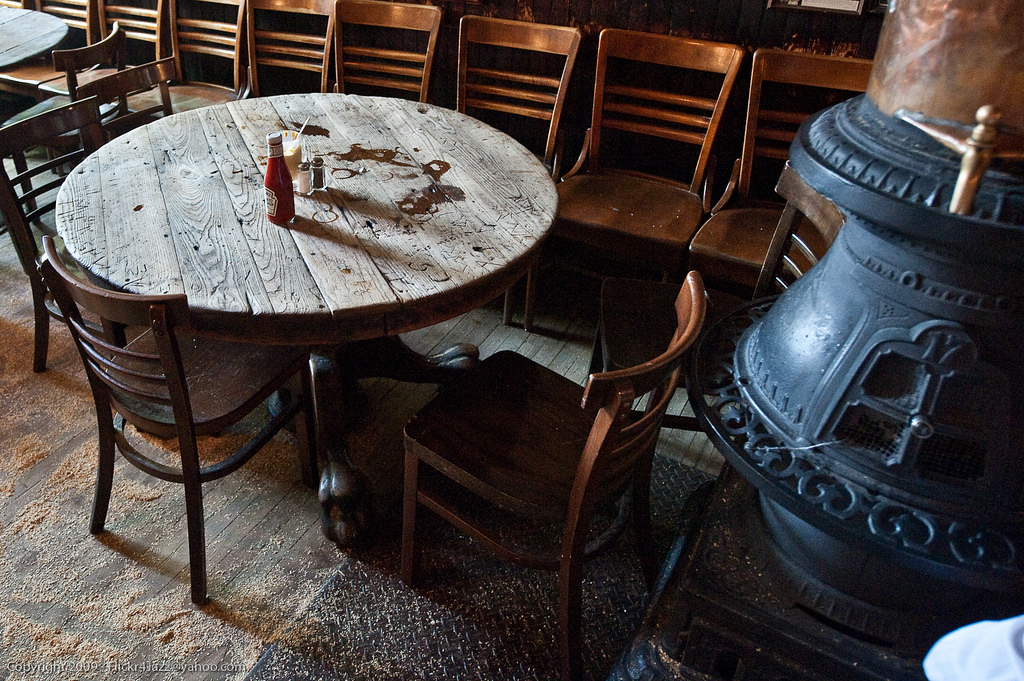
© Flickr/ Jazz Guy
With a floor strewn with sawdust, a cast iron stove providing warmth in the cold New York winters, and walls covered every inch with framed newspaper clippings, old photographs and artifacts, none of which have been removed since 1910. Not for nothing did this coziest of saloons once be called ‘The Old House At Home’. Only one drink is served here, the house beer, coming in two small glasses, and in ‘light’ or ‘dark’ variety. The dinner menu contains boxes of crackers, blocks of cheese and raw onions.
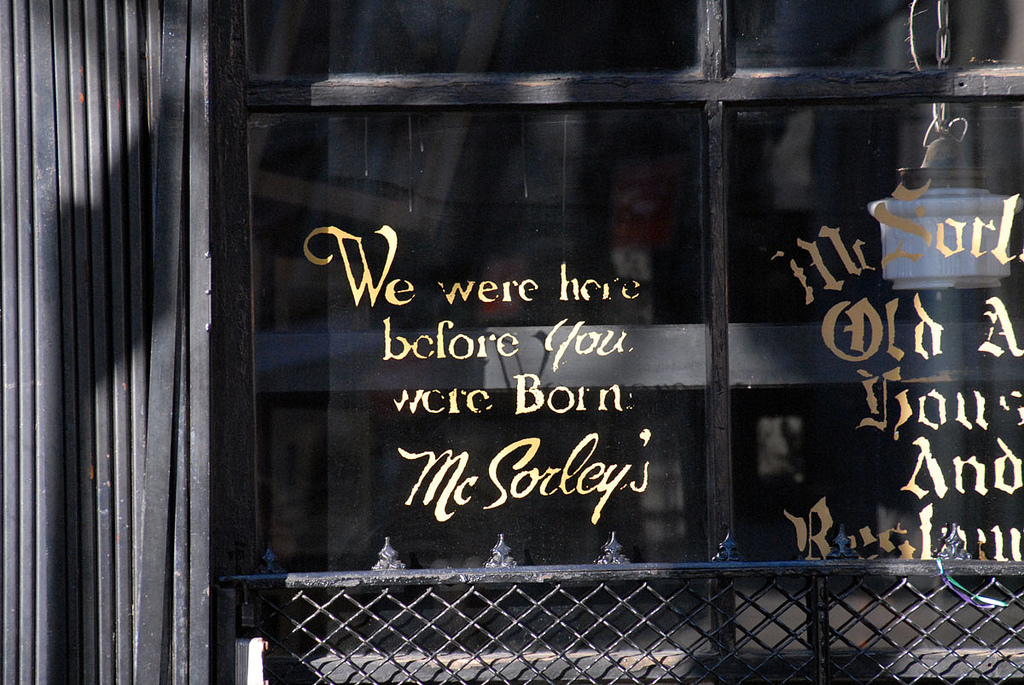
© Jankor
McSorley’s is the bar room of ‘old New York’, or as the bar’s mottos has it, “we were here before you were born”. The bar drew many writers to its friendly confines, including E.E.Cummings, who wrote his poem, “I was sitting in McSorleys” in 1923.
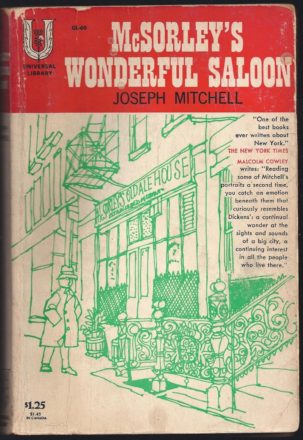 But it is with writer Joseph Mitchell, that McSorley’s is most associated. Writing often about the street characters who lived on the fringes of New York society, Mitchell published McSorley’s Wonderful Saloon in 1943. He chronicled the motley clientele of the bar, the mechanics, booksellers, waterfront workers, bar room scroungers and old men who he met there.
But it is with writer Joseph Mitchell, that McSorley’s is most associated. Writing often about the street characters who lived on the fringes of New York society, Mitchell published McSorley’s Wonderful Saloon in 1943. He chronicled the motley clientele of the bar, the mechanics, booksellers, waterfront workers, bar room scroungers and old men who he met there.
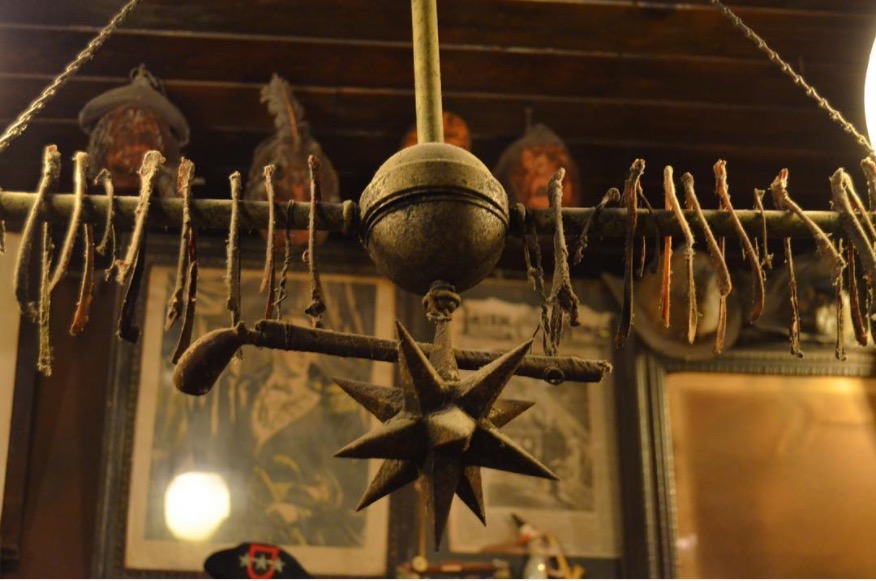
Century-old turkey wishbones left behind by the young soldiers who didn’t return home from the war © Instagram LeameHanna
Although best avoided at the weekends, when it resembles a fraternity house, during the week McSorley’s Old Ale House retains the air of an older, forgotten New York. Hardly anything has changed since Joseph Mitchell wrote, “it is equipped with electricity, but the bar is stubbornly lit with a pair of gas lamps, which flicker fitfully and throw shadows on the low cobwebby ceiling each time someone opens the street door.”
What To Say :
“I was sitting in mcsorley’s. outside it was New York and beautifully snowing.” – e.e.cummings


